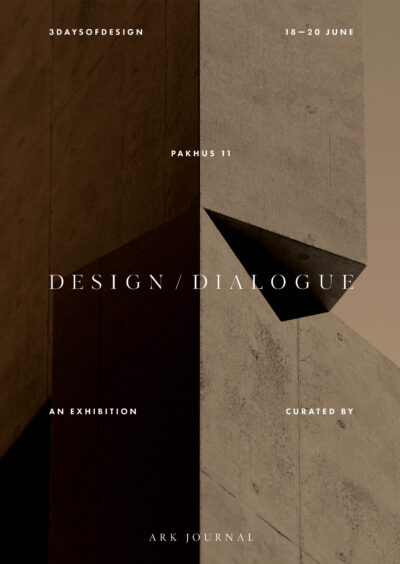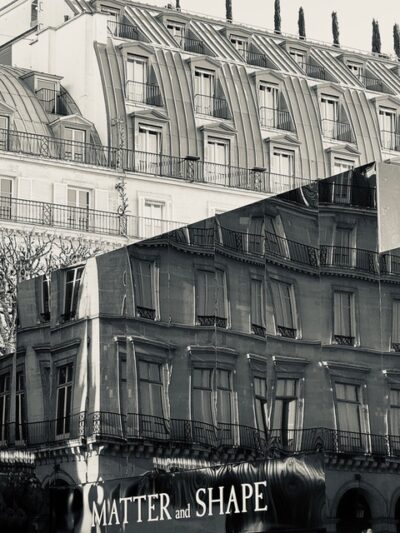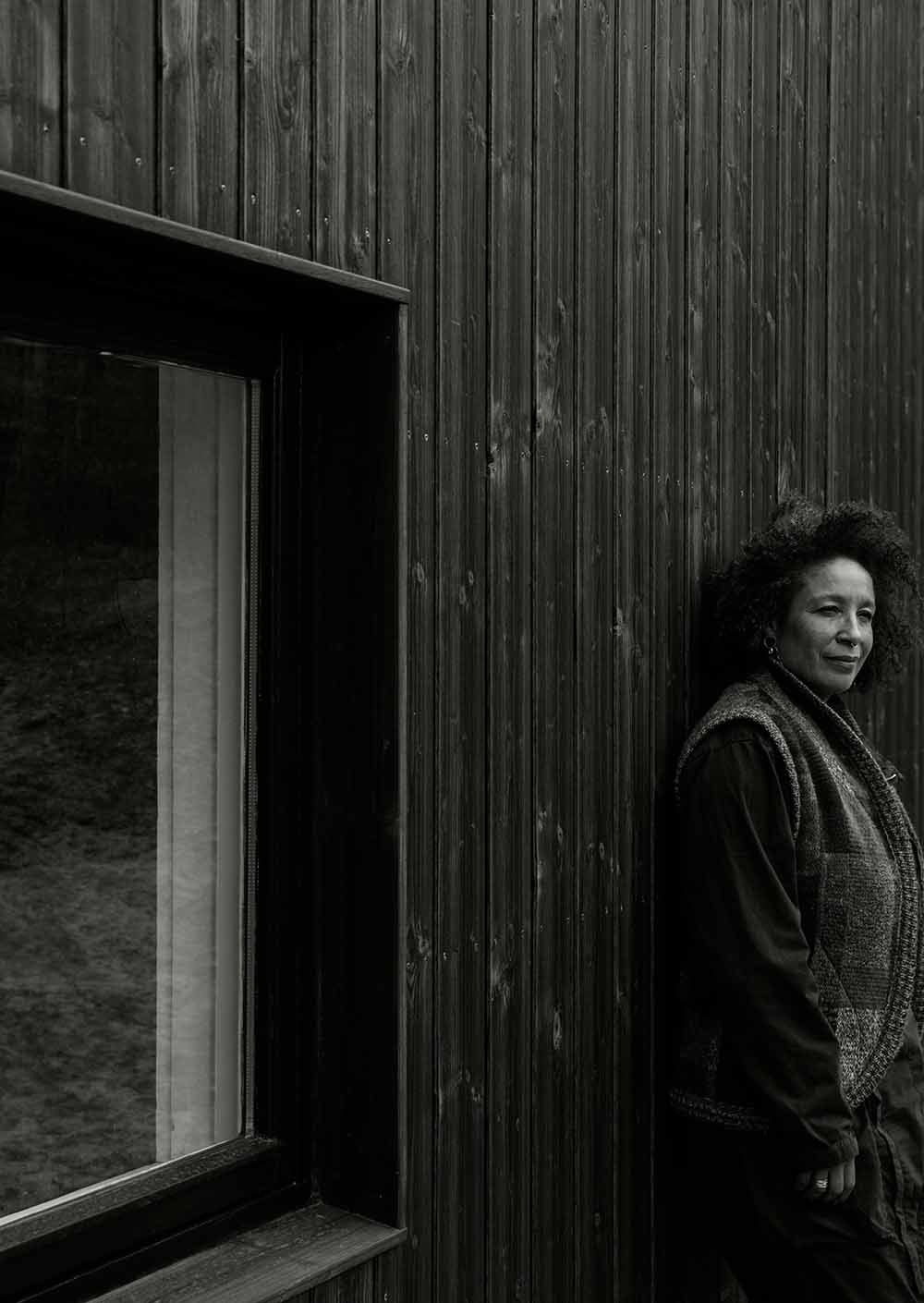
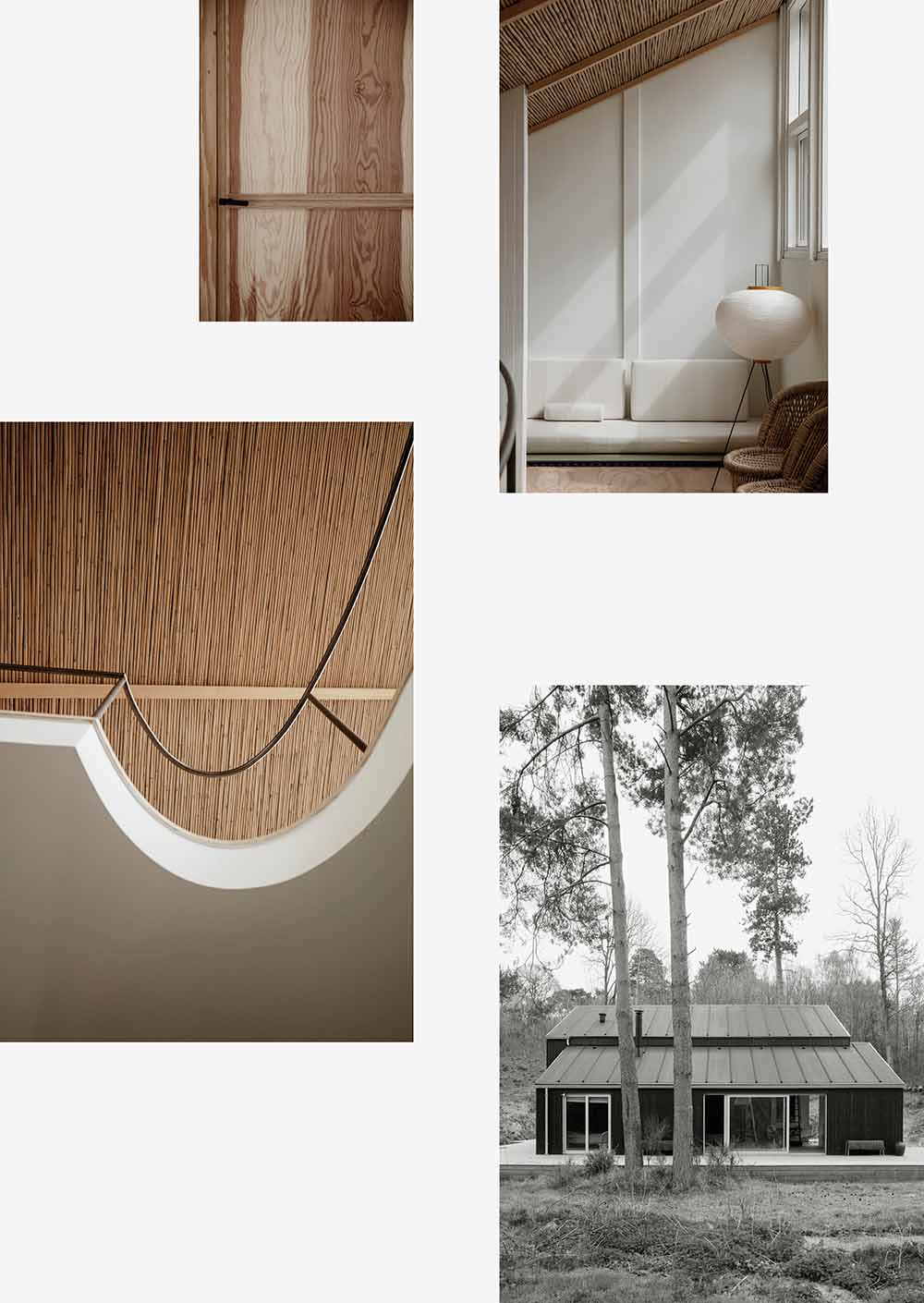
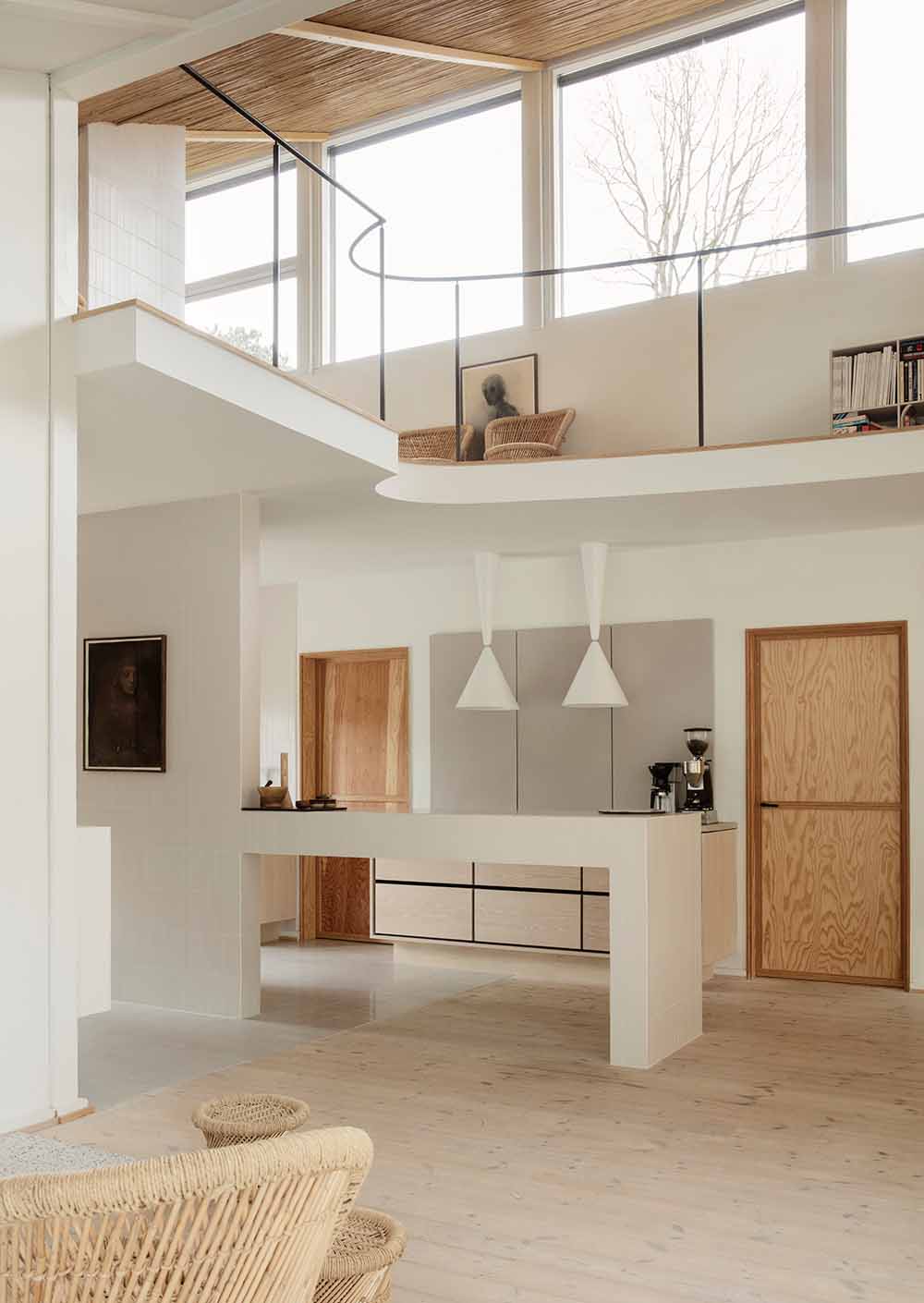
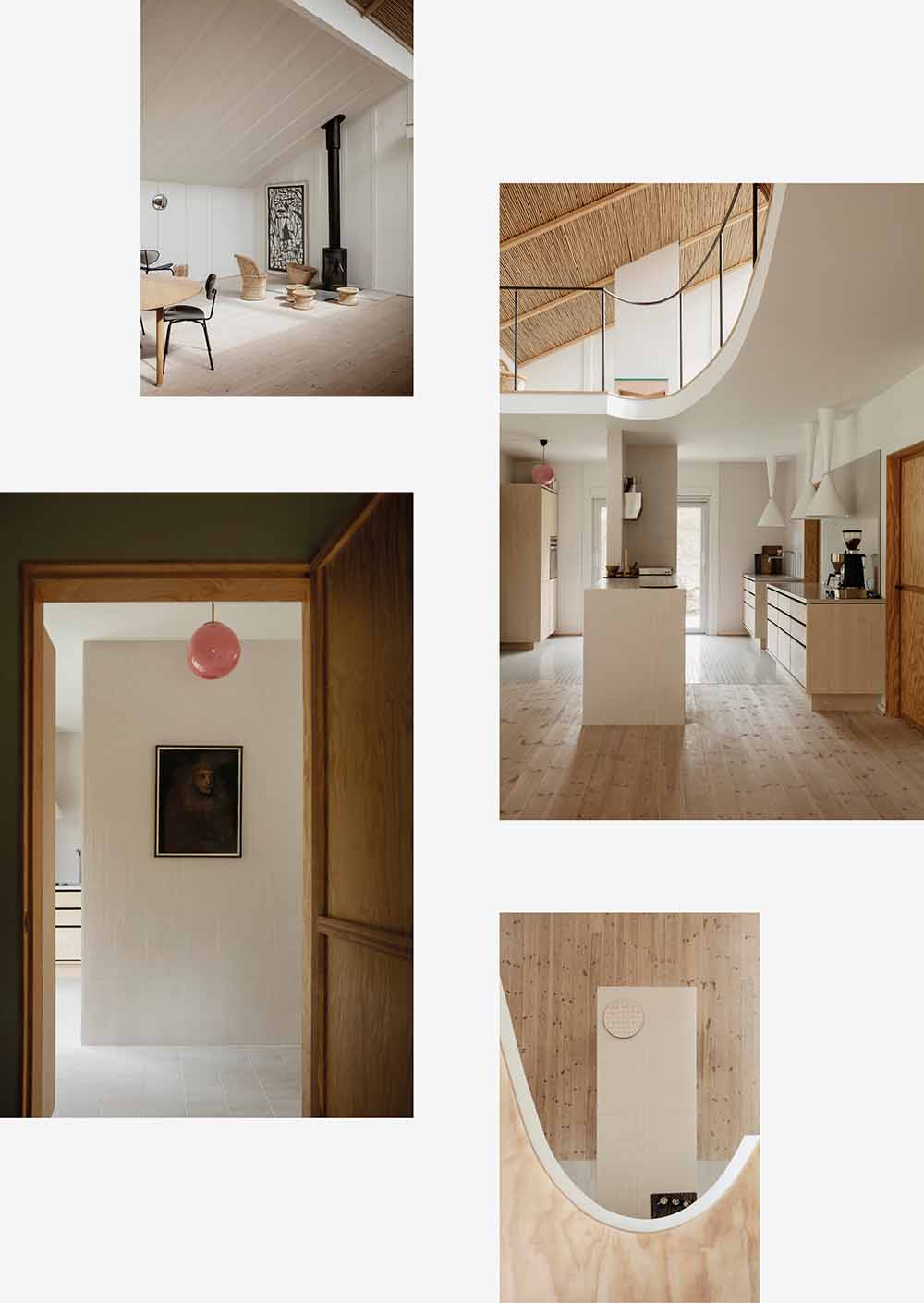
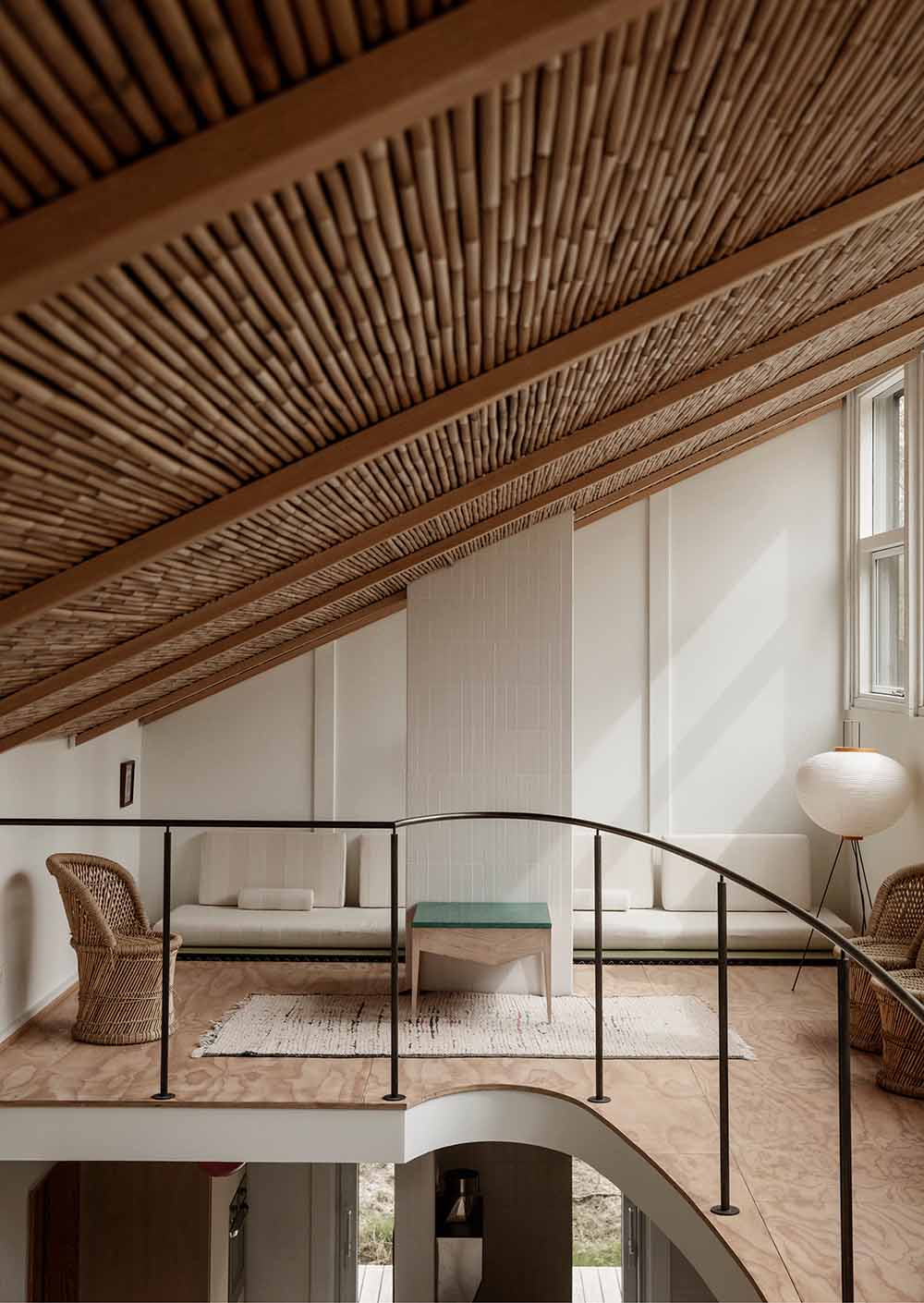
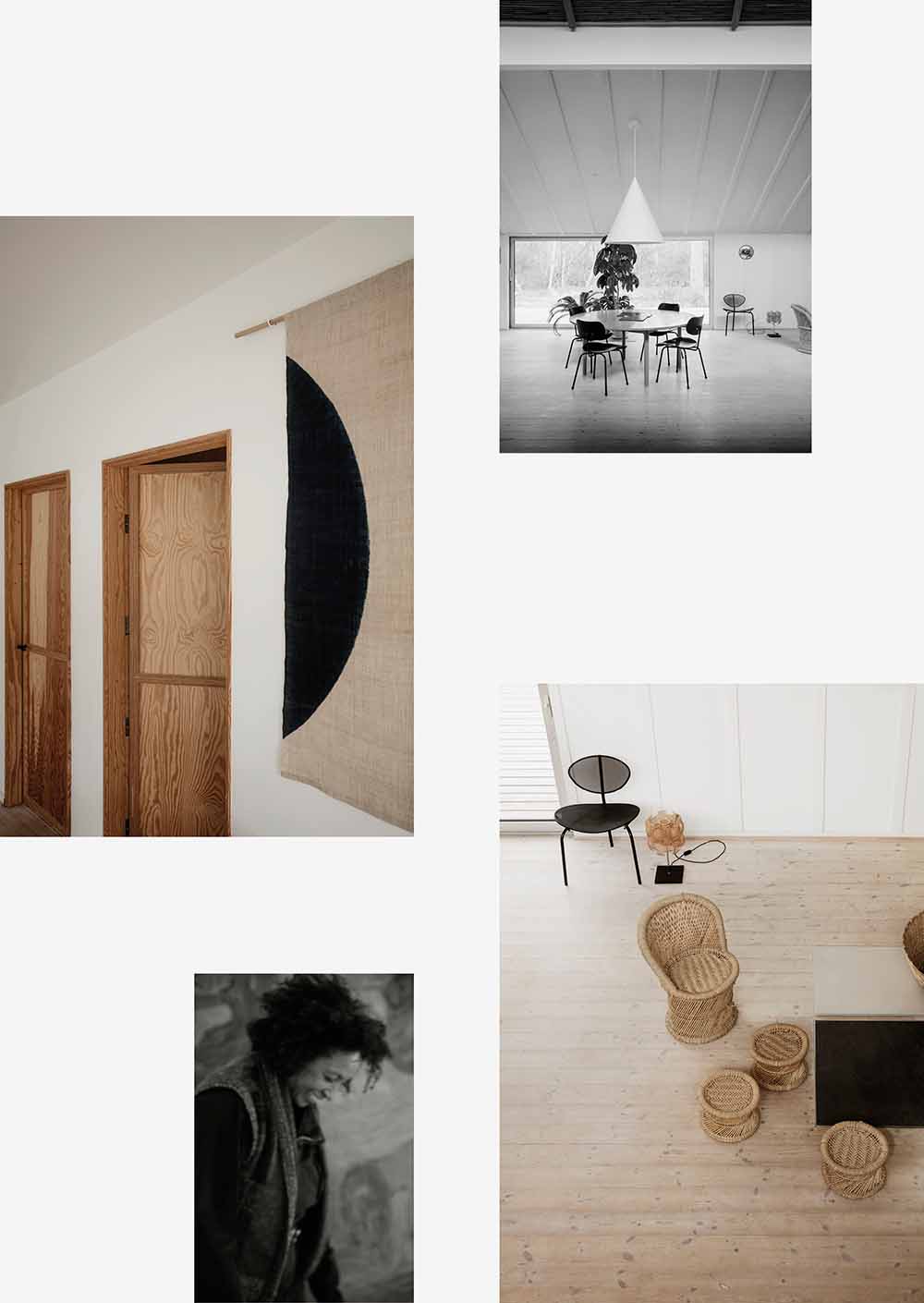

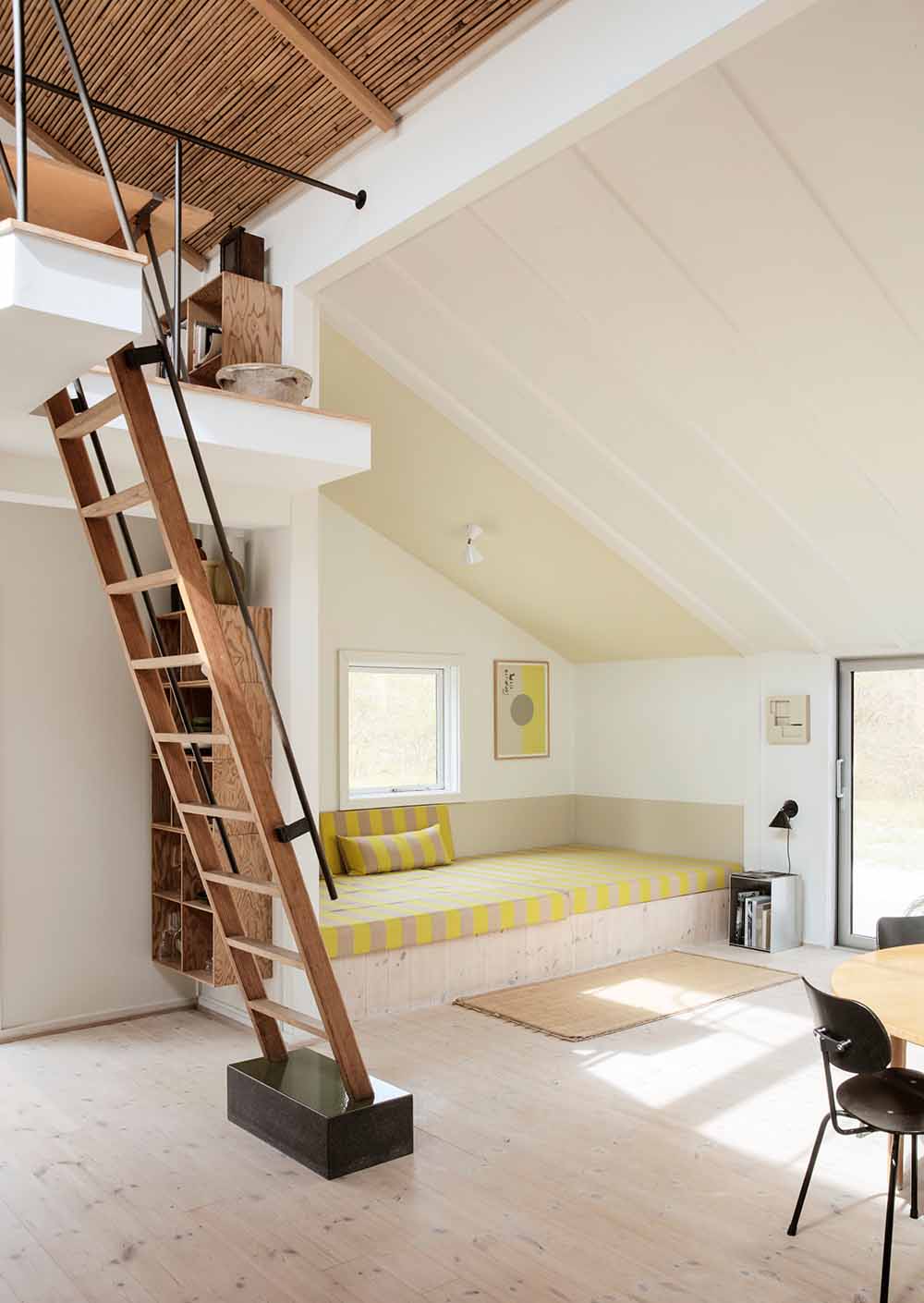
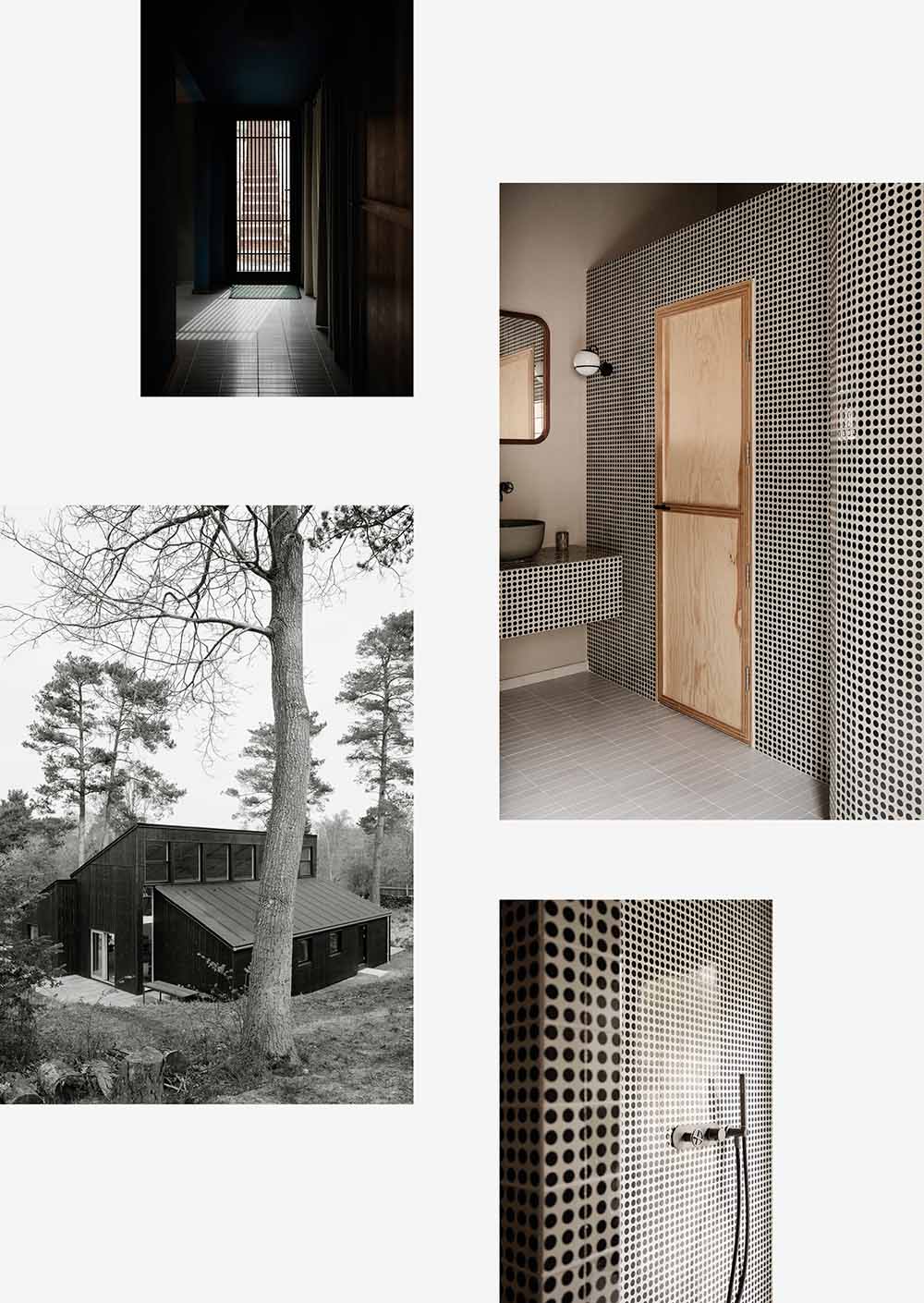
JOURNEY’S END
Home
A 90s portable church has found its home on a secluded hill in the forest, becoming a contemporary respite for creation and reflection for Josephine Akvama Hoffmeyer.
Danish vandrekirker or wandering churches, were built across the country in the 19th and 20th centuries. In anticipation of a permanent house of worship, prefabricated churches were assembled, then disassembled and relocated to a next new parish. Few have survived.
Josephine Akvama Hoffmeyer, director of paint and tile studio File Under Pop, and her husband architect Peter Bur Andersen, were searching for a tranquil space outside Copenhagen and they stumbled on one of these plywood buildings, ascetic and made of humble materials. She was immediately smitten: “The simple, almost Japanese approach to form was something I fell in love with – its sheer simplicity.”
The couple stripped the interior to its bare essentials, rebuilding with high-quality materials, adding their own sense of personal history and taste. New cladding using the traditional Japanese shou sugi ban technique – charring wood to preserve it and enhance its texture – along with a sleek, two-layer tar paper roof, created a uniform black exterior that contrasts
with the lush deep green surroundings.
“With the six metres to the ridge and the vast windows up high, we have the most incredible natural light,” Hoffmeyer explains. The interior maintains a balance between minimalism and warmth. Hoffmeyer, known for her atmospheric and colour-drenched environments, admits
the house’s subdued hues might surprise some.
The open living space is divided into functional zones for contemplation and relaxation, free from unnecessary clutter and detail. The mezzanine provides a concentrated space for work and rest, grounded in a tatami room inspired by Hoffmeyer’s travels to Japan, and the ceiling is lined with bamboo. Various artisans, including Archival Studies, contributed elements such as
intricate wooden doors with Japanese-inspired joinery.
This careful consideration of both form and function defines the house’s character. The wandering house has settled on a secluded hill, a site seemingly made for calm and immersion in the very elements of nature.
WORDS ALISA LARSEN
PHOTOGRAPHY HEIDI LERKENFELDT
STYLING PERNILLE VEST
DESIGN / DIALOGUE 2025
Returning for its second edition during 3daysofdesign 2025, DESIGN / DIALOGUE curated by Ark Journal continues its mission to validate and elevate new perspectives in design, spanning the disciplines of craft, object design, interior design, and decorative arts.
ZUCCHETTI AND FRIENDS
A custom-built showroom in Milan exhibits new design-driven Zucchetti collections like works of art.
MATTER AND SHAPE 2025
In the beautiful surroundings of the Jardin des Tuileries, a new chapter in design culture was written. MATTER and SHAPE 2025, a design salon unlike any other, positioned itself at the very intersection of art, materiality, and modern craftsmanship.

JOURNEY’S END
Home
A 90s portable church has found its home on a secluded hill in the forest, becoming a contemporary respite for creation and reflection for Josephine Akvama Hoffmeyer.
Danish vandrekirker or wandering churches, were built across the country in the 19th and 20th centuries. In anticipation of a permanent house of worship, prefabricated churches were assembled, then disassembled and relocated to a next new parish. Few have survived.
Josephine Akvama Hoffmeyer, director of paint and tile studio File Under Pop, and her husband architect Peter Bur Andersen, were searching for a tranquil space outside Copenhagen and they stumbled on one of these plywood buildings, ascetic and made of humble materials. She was immediately smitten: “The simple, almost Japanese approach to form was something I fell in love with – its sheer simplicity.”
The couple stripped the interior to its bare essentials, rebuilding with high-quality materials, adding their own sense of personal history and taste. New cladding using the traditional Japanese shou sugi ban technique – charring wood to preserve it and enhance its texture – along with a sleek, two-layer tar paper roof, created a uniform black exterior that contrasts
with the lush deep green surroundings.
“With the six metres to the ridge and the vast windows up high, we have the most incredible natural light,” Hoffmeyer explains. The interior maintains a balance between minimalism and warmth. Hoffmeyer, known for her atmospheric and colour-drenched environments, admits
the house’s subdued hues might surprise some.
The open living space is divided into functional zones for contemplation and relaxation, free from unnecessary clutter and detail. The mezzanine provides a concentrated space for work and rest, grounded in a tatami room inspired by Hoffmeyer’s travels to Japan, and the ceiling is lined with bamboo. Various artisans, including Archival Studies, contributed elements such as
intricate wooden doors with Japanese-inspired joinery.
This careful consideration of both form and function defines the house’s character. The wandering house has settled on a secluded hill, a site seemingly made for calm and immersion in the very elements of nature.
WORDS ALISA LARSEN
PHOTOGRAPHY HEIDI LERKENFELDT
STYLING PERNILLE VEST








